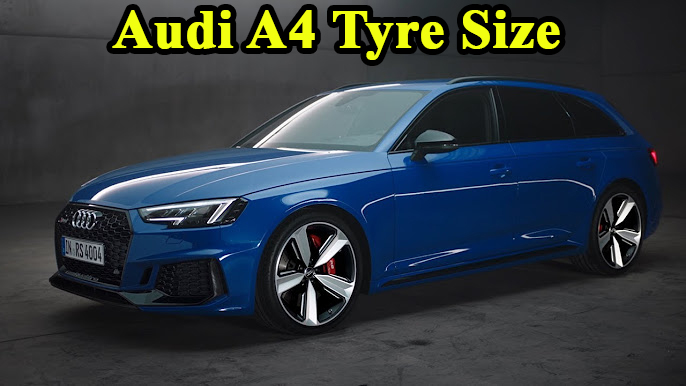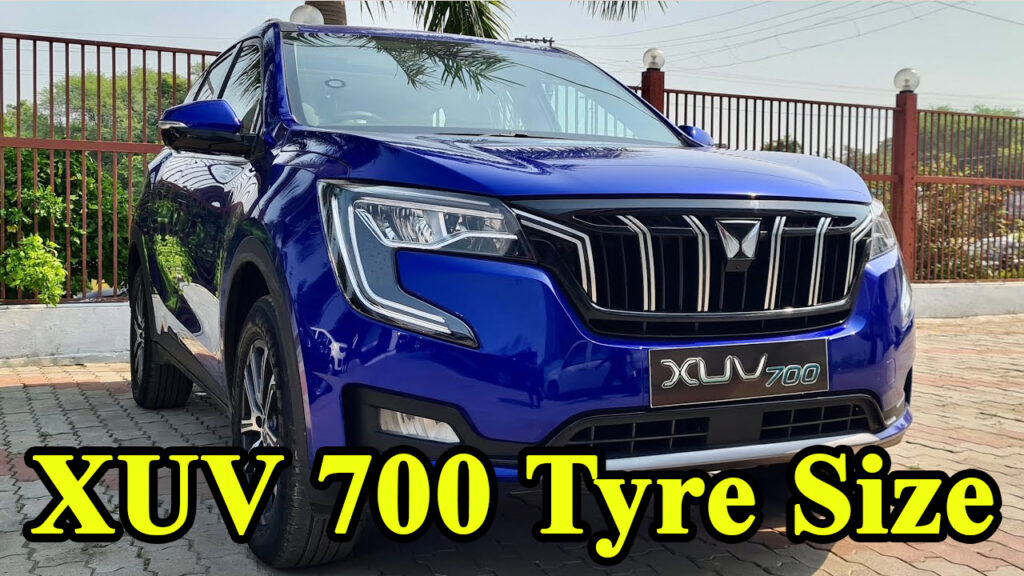The BMW X5 has evolved significantly over its generations, and with each iteration, its tire sizes have adapted to match changes in vehicle weight, power, and handling characteristics. It’s not uncommon for different trims within the same generation to have varying tire sizes, often with a staggered setup (wider tires on the rear axle).
Here’s a general overview of common tire sizes for different BMW X5 generations:
1. First Generation (E53 – 1999-2006): Early models often featured 17-inch to 19-inch wheels.
- Common sizes: 235/65R17, 255/55R18, 255/50R19, 285/45R19.
- Performance variants might have seen 275/40R20 (front) and 315/35R20 (rear) for a staggered setup.
2. Second Generation (E70 – 2007-2013): The E70 saw an increase in available wheel sizes, typically from 18 inches to 21 inches.
- Common sizes: 255/55R18, 255/50R19, 275/40R20 (front) and 315/35R20 (rear).
- Hub bore for most E70 X5 models was 74.0mm, but some X5M and X6M models had a staggered hub bore (74.0mm front, 72.5mm rear).
3. Third Generation (F15 – 2014-2018): The F15 continued the trend of larger wheel options, up to 22 inches.
- Common sizes: 255/50R19, 275/45R20, 275/40R21 (front) and 315/35R21 (rear).
- The bolt pattern remained 5x120mm with a 74.1mm hub bore.
4. Fourth Generation (G05 – 2019-Present): The latest generation G05 X5 offers a wide range of tire sizes, often with staggered setups, emphasizing performance and road presence.
- Common sizes include:
- 265/50R19 (base models)
- 275/45R20 (common standard size)
- 275/40R21 (front) and 315/35R21 (rear)
- 275/35R22 (front) and 315/30R22 (rear) (for M Sport and higher trims)
- The G05 shifted to a 5x112mm bolt pattern with a 66.6mm hub bore. This is an important detail for wheel compatibility.
Important Note on Staggered Setups: Many BMW X5 models, especially those with larger wheels and performance packages, come with a “staggered” wheel and tire setup. This means the rear tires are wider than the front tires. This configuration is designed to enhance traction and handling during acceleration and cornering, making the most of the X5’s powerful engine. However, it also means that tire rotation (swapping tires from front to rear) is often not possible, leading to potentially uneven wear and more frequent replacement of specific tires.
The Importance of Correct Tire Pressure
Beyond just the size, maintaining the correct tire pressure is paramount for your BMW X5’s performance, safety, and tire longevity. You’ll find the recommended tire pressures on a sticker typically located on the driver’s side door jamb or in your owner’s manual.
For many BMW X5 models, common recommended pressures are around 35 PSI (pounds per square inch) for the front tires and 38 PSI for the rear tires, though this can vary based on load and specific tire size.
How Much Does Walmart Charge To Mount Tires
Why is correct tire pressure so vital?
- Safety: Under-inflated tires can lead to increased heat buildup, risking tire failure (blowouts). Over-inflated tires can reduce the contact patch with the road, affecting grip and braking.
- Performance: Proper inflation ensures optimal handling, steering response, and stability, allowing you to fully experience the X5’s dynamic capabilities.
- Tire Life: Correct pressure promotes even tread wear. Incorrect pressure (too high or too low) can lead to premature wear on the edges or center of the tread, shortening tire life and costing you more in the long run.
- Fuel Efficiency: Under-inflated tires create more rolling resistance, leading to increased fuel consumption. Maintaining proper pressure can improve fuel efficiency by up to 3.3%, according to some studies.
Run-Flat Tires: BMW’s Preferred Choice
Many modern BMW X5 models, especially those delivered in India, come equipped with run-flat tires as standard. These tires are designed with reinforced sidewalls that allow them to continue supporting the vehicle for a limited distance (typically 80 km/50 miles at a maximum speed of 80 km/h/50 mph) even after a puncture and complete loss of air pressure.
Pros of Run-Flat Tires:
- Enhanced Safety: Eliminates the need to change a tire on the roadside, especially in unsafe conditions.
- Convenience: No need to carry a spare tire, freeing up cargo space.
- Increased Stability: Even when punctured, they offer more stability than a completely flat conventional tire.
Cons of Run-Flat Tires:
- Ride Comfort: Generally, run-flat tires have stiffer sidewalls, which can translate to a slightly harsher ride compared to conventional tires.
- Cost: Run-flat tires are typically more expensive to purchase than their conventional counterparts.
- Repairability: While some minor punctures can be repaired, many tire shops recommend replacing run-flat tires after any puncture, even if it seems repairable, due to potential internal damage not visible from the outside.
- Availability: Finding replacements, especially for less common sizes, might sometimes be challenging outside of major cities or authorized dealerships.
The Impact of Choosing the Wrong Tire Size
Selecting the incorrect tire size for your BMW X5 can have a range of negative consequences, affecting everything from performance and safety to the longevity of your vehicle’s components.
- Compromised Handling and Stability: An ill-fitting tire can alter the vehicle’s center of gravity and handling dynamics, leading to unpredictable steering, reduced grip, and an overall less confidence-inspiring drive.
- Speedometer Inaccuracy: A different tire diameter will affect your speedometer and odometer readings, leading to inaccurate speed displays and mileage tracking.
- ABS and Stability Control Issues: Modern BMWs rely heavily on precise wheel speed data for their Anti-lock Braking System (ABS) and Dynamic Stability Control (DSC). Mismatched tire sizes can confuse these systems, potentially leading to errors, reduced effectiveness, or even damage to the transfer case in xDrive models. BMW specifies a very small tolerance (e.g., 1.2% difference in rolling circumference) for xDrive models to prevent issues.
- Rubbing and Clearance Problems: Oversized tires might rub against the fender liners, suspension components, or brake calipers, causing damage to both the tire and the vehicle.
- Accelerated Wear on Components: Incorrect tire sizes can put undue stress on suspension components, wheel bearings, and the drivetrain, leading to premature wear and costly repairs.
- Reduced Fuel Economy: Tires that are too wide or have an incorrect rolling resistance can negatively impact fuel efficiency.
The Silent Alarm: Understanding and Fixing Ford Tire Pressure Sensor Faults
Tire Upgrade Options and Considerations
While sticking to OEM recommended sizes is generally the safest bet, some X5 owners explore upgrade options for various reasons:
- Performance Tires: For enthusiasts looking to maximize grip and handling, especially for spirited driving, upgrading to ultra-high-performance (UHP) tires can significantly enhance the X5’s cornering abilities and braking performance. Brands like Michelin Pilot Sport, Continental ExtremeContact, and Pirelli P Zero are popular choices.
- All-Season Tires: For those who experience varied weather conditions but don’t want the hassle of seasonal tire changes, high-quality all-season tires offer a balance of performance in different temperatures and light snow.
- Winter Tires: In regions with severe winter conditions, dedicated winter tires are crucial for optimal safety and traction on snow and ice.
- Off-Road Tires: While the X5 is primarily a road-biased SUV, some owners might opt for all-terrain tires if they frequently venture onto unpaved roads. However, this will typically compromise on-road handling and comfort.
When considering any tire upgrade, always consult with a reputable tire specialist or your BMW service center to ensure compatibility with your specific X5 model and trim.
What to Expect: BMW X5 Tire Prices in India
The cost of BMW X5 tires in India can vary significantly based on several factors:
- Tire Size: Larger diameter tires and wider profiles will generally be more expensive.
- Brand: Premium brands like Michelin, Pirelli, Continental, and Goodyear typically command higher prices than more budget-friendly options.
- Type of Tire: Run-flat tires are more expensive than conventional tires. Performance-oriented tires will also be pricier.
- Tread Pattern/Technology: Tires with advanced tread designs for specific performance (e.g., wet grip, noise reduction) or longer tread life may cost more.
- Retailer and Location: Prices can vary between authorized BMW service centers, multi-brand tire retailers, and online stores.
In India, you can expect the price of a single BMW X5 tire to range from approximately ₹15,000 to ₹55,000 or even more, depending on the exact specification. For example, a 255/50R19 from a reputable brand might be in the ₹20,000-₹30,000 range, while a 275/35R22 or 315/30R22 performance run-flat tire could easily exceed ₹40,000-₹50,000.
Case Study: Imagine a BMW X5 xDrive40i owner in Bangalore. Their vehicle came with 20-inch wheels and a staggered setup: 275/45R20 front and 305/40R20 rear run-flat tires. When it’s time for replacement, they might find a set of four premium brand run-flats costing upwards of ₹1.5 – 2 Lakhs (approx. $1,800 – $2,400 USD). If they opt for a non-run-flat alternative (requiring a spare tire solution), the initial cost might be lower, but they’d need to consider the practicalities.
Maintenance and Longevity
To maximize the life of your BMW X5 tires and ensure consistent performance, regular maintenance is key:
- Regular Tire Pressure Checks: At least once a month, and before long journeys.
- Tire Rotations (where applicable): For non-staggered setups, rotating tires every 8,000-10,000 km helps ensure even wear.
- Wheel Alignment: Proper wheel alignment prevents uneven tire wear and ensures precise steering.
- Tire Balancing: Ensures smooth rolling and prevents vibrations.
- Visual Inspection: Regularly check for any signs of damage, punctures, or excessive wear.
Conclusion: The Right Tires, The Right Drive
Choosing the correct tire size and maintaining them diligently is not just about adhering to manufacturer specifications; it’s about preserving the essence of what makes a BMW X5 a BMW X5. It’s about optimizing the thrilling dynamics, ensuring the safety of your loved ones, and protecting your significant investment.
While the array of numbers and specifications might seem daunting at first, a deeper understanding reveals how each element contributes to the overall driving experience. Whether you’re navigating the bustling streets of Mumbai or cruising on the open highways of Rajasthan, the right set of tires, properly inflated and maintained, will ensure your BMW X5 performs at its peak, providing that unparalleled blend of luxury, power, and handling you expect. Don’t view tires as just another consumable; see them as the critical interface between your BMW and the road, a vital component of its DNA.
Frequently Asked Questions (FAQs)
Q1: How do I find the correct tire size for my BMW X5? A1: The most reliable place to find your BMW X5’s original equipment (OE) tire size is on the sticker located on the driver’s side door jamb. You can also consult your owner’s manual or visit a reputable tire dealer who can look up the specifications based on your vehicle’s make, model, and year.
Q2: Can I put different sized tires on the front and rear of my BMW X5? A2: Many BMW X5 models, particularly those with performance packages, come from the factory with a staggered setup, meaning wider tires on the rear axle. If your X5 has an xDrive all-wheel-drive system, it is absolutely critical that any replacement tires maintain the correct rolling circumference difference (as specified by BMW, typically within 1-2%) between the front and rear axles to avoid damage to the xDrive transfer case. Always consult your owner’s manual or a BMW specialist.
Q3: Are run-flat tires mandatory for BMW X5? A3: While many new BMW X5s come equipped with run-flat tires as standard, they are not strictly mandatory. You can switch to conventional (non-run-flat) tires. However, if you do, you must consider carrying a spare tire kit or a tire repair kit, as your vehicle likely doesn’t have a spare tire well or the necessary tools for a conventional tire change. Be aware that switching to non-run-flats might also affect your insurance coverage or warranty conditions in some cases.
Q4: How often should I check my BMW X5’s tire pressure? A4: You should check your tire pressure at least once a month, and always before embarking on a long journey. It’s best to check when the tires are cold (before driving) for the most accurate reading.
Q5: What are the best tire brands for a BMW X5? A5: Top tire brands frequently recommended for BMW X5s include Michelin, Pirelli, Continental, Goodyear, and Bridgestone. These brands offer a range of tires designed for performance, comfort, and durability that align with the X5’s characteristics. The “best” tire depends on your driving style, local climate, and budget.




